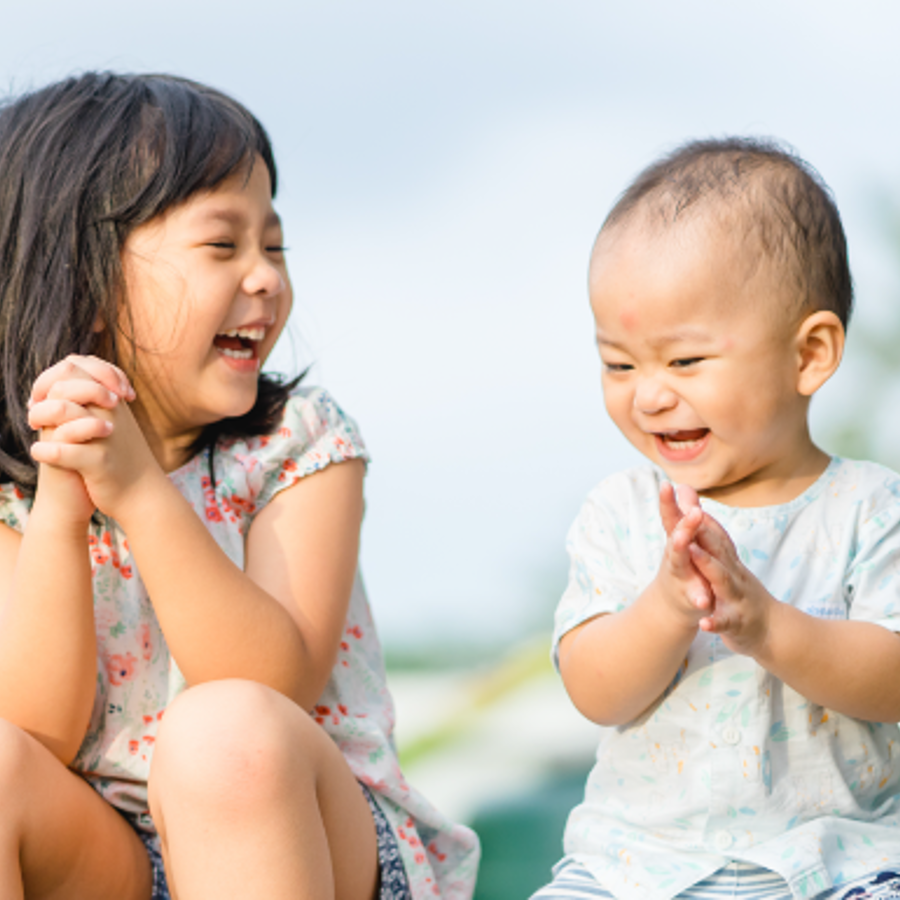
How and why do children from the same parents differ genetically?
January 30, 2014

- Related Topics:
- Reproduction,
- Meiosis
A curious adult from the U.S. asks:
"My wife and I were chatting this morning about our children (boy and girl) and twins and then genes. It made me wonder, why any of our children have differences at all. Her ovaries are producing eggs which presumably have the same DNA. I produce sperm which I also presume to have the same DNA.
Mixing the two together, one would think all our children would be clones - which of course they are not. So what makes the difference, and more importantly WHY? Why would her body and mine produce something that is “random?” It would seem more logical to produce the same things."
The first part of your question is pretty easy to answer… each child is different because your sperm cells don’t all have the same DNA. And the same goes for your wife's eggs. Each sperm and each egg has a never before seen combination of DNA.
This happens because even though each sperm and egg gets half of the parent’s DNA, they don't each get the same half. Turns out there are pretty close to an infinite number of possible genetic combinations for each set of parents.
The half part of all of this is because if an egg and a sperm had all of a parent’s DNA, then when they combined, the baby would have twice as much DNA as its parents. And their child would have 3-4 times as much DNA (depending on how much DNA the other parent has). Keep doing this for too long and you’ll have more DNA than can fit in a cell!
So that explains the first part of your question, the how of it all. It also explains the why in terms of why all of our kids have different DNA.
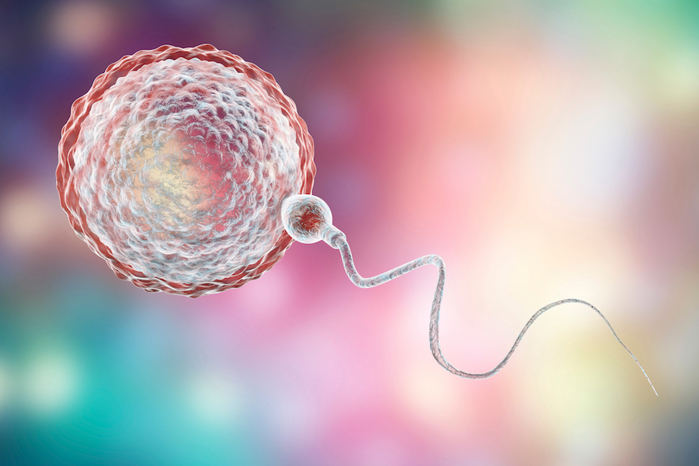
What we haven’t answered is the big why. Why did this method of reproduction evolve in the first place?
You might be surprised to know that scientists don’t yet have a good answer for why sex is such a success biologically. It is easy to understand why all of this mixing is good at a species level. Figuring out why it is good for the individual is a bit trickier…
Surviving Tough Times
We see two broad ways that beasts, including us, have offspring in the wild. In one, called asexual reproduction, “parents” basically pinch off clones of themselves. In theory, each new offspring is a carbon copy of the original.
The other method is the way humans go about it — sexual reproduction. Here, two individuals combine bits of themselves to create an offspring with a unique set of DNA.
Out in the world, most organisms bigger than a single cell end up reproducing sexually. (And even some single cells like yeast can reproduce sexually.) This means there has to be something useful in it.
It is easy to see what that useful thing is if we look at the species as a whole. Let’s do a quick thought experiment to see how.
Imagine some sort of complex ecosystem in a field somewhere. Each of the plants and animals that have lived there for many generations is pretty well adapted to life in this field. But then, something happens that slowly changes the environment into something more desert-like.
If everything in the field had clones for babies, they'd be in trouble in this new environment. They'd be adapted to plenty of water, maybe some trees and grass and so on. But they may not be so well adapted to a desert. All of the new clones would probably struggle until they died out or were taken over by some invading species.
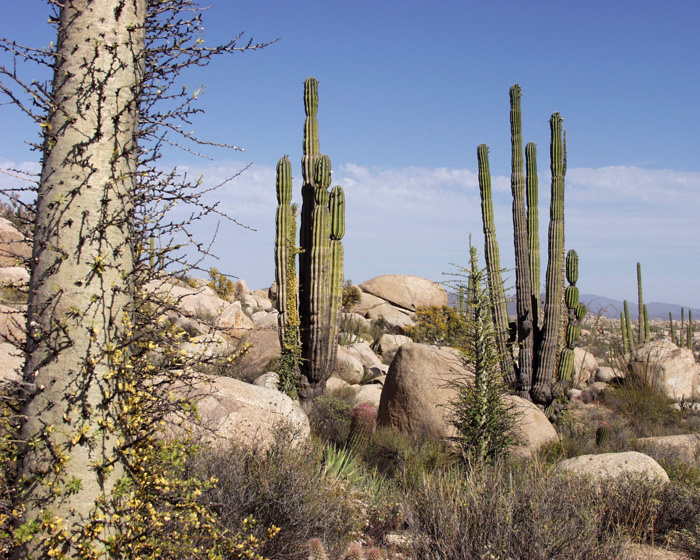
Organisms that reproduce sexually are much better off in these sorts of changing situations. In our example, each offspring made sexually has a unique combination of DNA, increasing the chances that some combination will do better in this drier environment.
These better adapted survivors would then go on to have kids made up of new combinations centered on traits that help them do well in the desert. Over time, the surviving species will have adapted to this new environment. This is called natural selection.
Then, when things change and the desert becomes wetter, this can all start again. Sexual reproduction allows species to have a better chance for survival in a changing world.
So this is why sexual reproduction is good for species. The mixing of DNA makes it more likely these species can survive environmental changes.
Unfortunately, your genes don't know what is good for a species, and sexual reproduction actually poses some risks for the individual. Not only does it slow down reproduction, but it also requires contact — which increases the chances for disease. If there was no benefit for the individual, these two factors might be enough to be deal breakers.
And in fact, asexual beasts don’t really make clones of each other. They tend to make lots of mistakes when passing their DNA to the next generation which means the children are different from the parents. So sexual reproduction may not even be the only way to get the diversity a species needs!
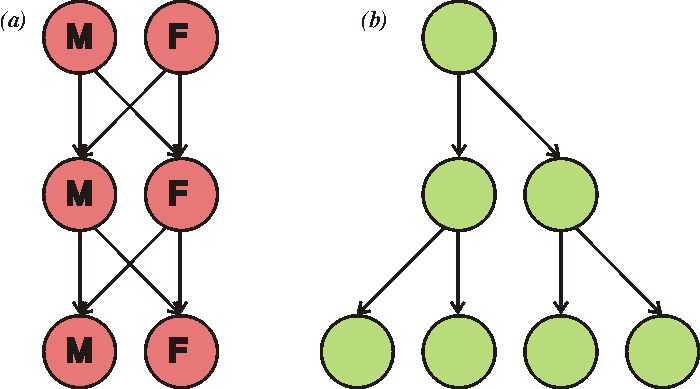
Right now scientists don't know exactly why sexual reproduction is good for the individual. One idea that seems plausible is that it helps keep our DNA in a stable form. In other words, without sexual reproduction our DNA might quickly become a jumbled mess.
Maintaining a Genome
The more complicated an organism is, the more complex its DNA needs to be. Humans need to have a set of DNA that can make all the different kinds of cells in the body. Every cell needs the instructions for making blood, brain, hair, kidneys and so on.
All of this complexity requires that a bunch of genes get turned on or off in the right places at the right times under the right circumstances. To pull this off, there are lots of moving parts, which means lots of places where things can go wrong.
Humans have 23 pairs of chromosomes. Left to their own devices, every now and then chromosomes get stuck together, bits go missing and so on. You can see this kind of thing happening in cancer cells for example.
One thing that sexual reproduction does is give us the opportunity to repair broken DNA and if the damage is too bad, eliminate the cell completely. This is done during a process called meiosis, which is required to make sperm and eggs that have half the amount of DNA as we discussed earlier.
Meiosis is a time when each pair of chromosomes can line up and use each other to fix any mistakes. It is also a time when passing the wrong number of chromosomes or a beat up chromosome to the next generation is less likely. And this isn’t everything. Meiosis also helps to reprogram the DNA so the process of developing from a single cell can start all over again.
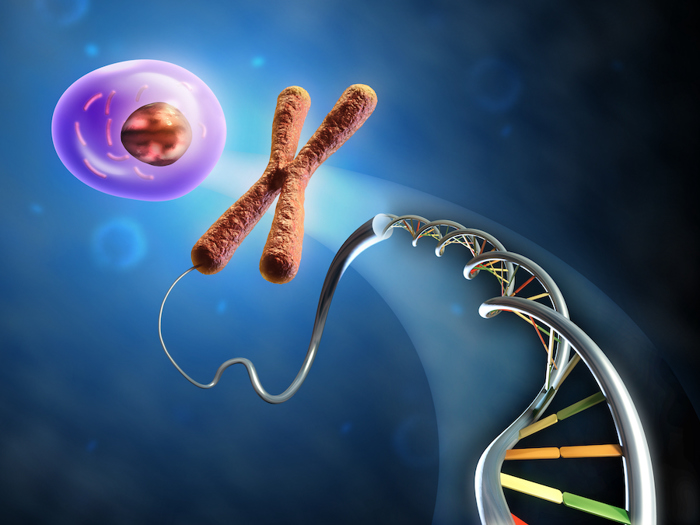
As our cells divide, those that are destined to become kidneys build up a special set of chemical markers that programs them to do kidney things. The same thing happens with the heart, blood, brain and all of the rest of our cells.
If you took a kidney cell and tried to clone a human you’d just get a kidney. The chemical marks telling the cell to do kidney things need to be removed to clone a human. This also needs to be done when making a baby sexually. These chemical marks are removed when sperm and eggs are made.
So it may be that sexual reproduction isn’t here to create diversity (although that is a nice side effect!). Instead, it may be here because making sperm and eggs repairs our DNA and helps keep the chromosomes stable and pretty much the same generation after generation.
Read More:
- University of Hawaii: The relationship between variation, sexual reproduction, and natural selection
- Scitable: Risk/benefit and evolutionary analysis of sexual reproduction
- Amoeba Sisters: Asexual and Sexual Reproduction (video)

Author: Dr. D. Barry Starr
Barry served as The Tech Geneticist from 2002-2018. He founded Ask-a-Geneticist, answered thousands of questions submitted by people from all around the world, and oversaw and edited all articles published during his tenure. AAG is part of the Stanford at The Tech program, which brings Stanford scientists to The Tech to answer questions for this site, as well as to run science activities with visitors at The Tech Interactive in downtown San Jose.
 Skip Navigation
Skip Navigation
